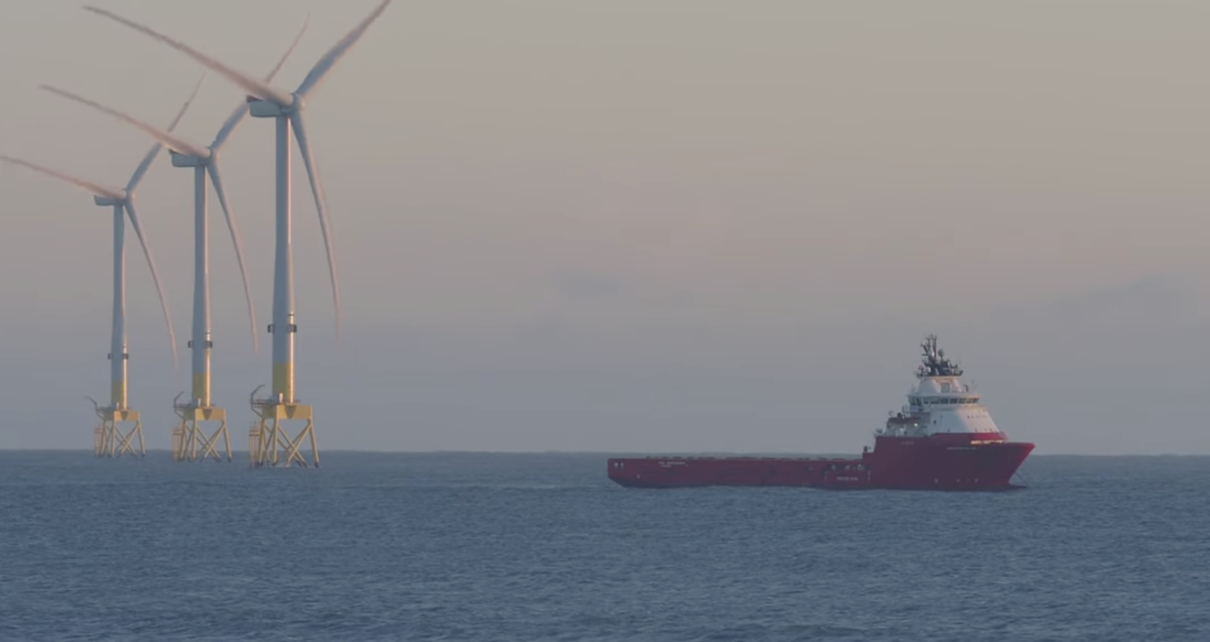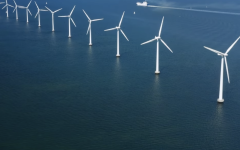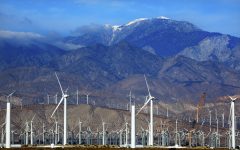
Offshore Wind farm. (Photo: Energy.ca.gov)
Offshore Wind Energy: The Cost and Economic Impacts Part 1
Wind energy is very expensive and will never be able to compete in a free market without subsidies
By Robert Sidenberg, April 16, 2024 9:00 am
I have been studying the economic effects of Offshore Wind Energy and Renewable Energy over the past year. Contrary to what wind developers, many politicians, and news outlets would have us believe, it is clear that Wind Energy, especially Offshore Wind Energy (OSW) Energy, is the worst way to produce electricity. It is one of the most expensive and, owing to its inherent intermittency, least efficient forms of electricity generation. The widely cited figures of OSW being inexpensive with costs decreasing over time, is a fallacy.
On the surface it sounds plausible since wind is free. Maybe so but the cost to harness and convert the wind to electricity more than makes up for it. The numbers used are based only on the cost of generation when the wind is blowing and the sun is shining but fail to take into account the cost of their intermittency. Another figure typically omitted is the tremendous cost of getting the electricity connected to the grid. Particularly for deep water projects requiring thousands of miles of cable buried in the ocean floor and numerous floating substations.
Perhaps one of the most overlooked figures is the cost associated with subsidies. Most of the subsidies are made available through the federal government in the Inflation Reduction Act which provides Investment Tax Credits of up to 50% of the capital cost of a project. Other subsidies are created by various states which provides for Power Purchase Agreements (PPA’s). PPA’s are subsidized guaranteed rates paid to offshore wind energy developers over a contract period of 20 to 25 years. The amounts generally increase over the term of the contract at a fixed annual escalation rate of 1 to 3%. These attractive subsidies are 2.5 to 4 times the current wholesale energy market price and are the primary source of revenue for the developers.
Government, at taxpayers expense, is providing subsidies of over $3 trillion, with interest adding another trillions of dollars more (federal govt’s. estimate) on a technology that, at best, produces electricity at only 40% of its full capacity, in part because it is dependent on specific weather conditions to operate. Additionally wind and solar energy require other reliable energy generators such as coal, natural gas, or nuclear standing by to be available when needed. While standing by these generators still incur costs so when they do kick in their prices are increased to make up for that non-income producing period.
Wind energy is very expensive and will never be able to compete in a free market without subsidies. Subsidies can sometimes be justified temporarily for new technologies with large up front costs to get off the ground but wind energy has been around for more than 30 years so to claim it an infant industry doesn’t hold up. Do the benefits exceed their costs? Certainly not from an economic perspective and not from an environmental perspective either. The wind energy developers and the politicians that support it benefit greatly at the expense of taxpaying citizens.
When government subsidizes a particular industry they are in effect choosing economic winners and losers and invariably choose poorly because the choices made often reflect political favoritism. There is a staggering amount of money being shelled out to the various wind energy companies. A portion of the money is likely to end up in the form of donations paid out as campaign contributions to supporting politicians and to environmental organizations who consider wind energy to be “green”.
The historically large government subsidies for renewable energy distort energy wholesale markets by crowding out more productive private investment. They also reduce the resources available for other more efficient and reliable forms of energy generation such as small nuclear reactors, or advanced natural gas plants using carbon capture.
The addition of large-scale wind and solar facilities to the grid increases price volatility of electricity in the wholesale power markets which drives up costs. Under organized wholesale power rules, generators bid to supply electricity at their marginal cost. Wind and solar generators can bid at or below zero cost since their profit is being subsidized by taxpayers.
An expert in energy rate regulation, Johnathan Lesser in his report “Green Energy and Economic Fabulism” explains what is known in California as the “duck curve.” During the day solar generation peaks while at the same time demand is low creating an excess of electricity which the state often has to pay to export it to other states. As solar and wind generation has increased, there are more hours where wholesale prices are below zero. Generators like nuclear plants that cannot be cycled on and off must still bid into the market at all hours and when prices turn negative must pay to dispose of the electricity generated. The additional subsidized generation thus crowds out generators that are both more efficient and vital to maintain grid reliability so many states now provide subsidies to nuclear plants to ensure they do not shut down.
When natural gas generators, which are critical when electricity demand is at its highest, become uneconomic to operate because of a flood of competing subsidized wind and solar power they too must be subsidized. According to Lesser, “A system of subsidies that causes economic distortions in electricity markets requiring further subsidies to overcome them is pure economic madness.”
The resulting situation has caused the Golden State’s electricity prices to become the second highest in the country, with only Hawaii’s costs being greater.
- Offshore Wind Energy: The Cost and Economic Impacts Part 1 - April 16, 2024
- Green Energy Destroying California’s Coast: Morro Bay Wind Farm Project - January 14, 2024
- The Morro Bay Wind Farm and Demise of Port San Luis - July 11, 2023





Every local , state and our federal government is broke. Windmills and bullet trains and trips to Mars are not in our future. These Vulture capitalists are just too late..
Reap the wind of economic reality! There won’t be enough to cover our commitments currently.
Certainly not enough for the Dr. Suess fantasies.
NO to floating offshore wind turbines!
The Epoch Times reported recently that some scientists are sounding alarms about the effects on cell and membrane structures of “infrasound” produced by wind turbine blades. When wind turbines rotate they generate not only electricity but also infrasound which is defined as a sound wave with a frequency of less than 20 hertz (Hz). The lower the frequency of the sound, the greater its wavelength and the harder it is to shield from it. Infrasound can penetrate walls, people, and animals. Today’s wind turbines reach frequencies as low as 0.25 Hz. The wavelength of this frequency is just under 0.86 miles.
Infrasound has another special feature. Humans cannot usually hear frequencies below 16 Hz, which marks the so-called lower hearing threshold. We cannot hear many of the sounds emitted by wind turbines but we may feel them in our bodies as humming or rumbling, as with a loudspeaker. The lower the frequency, the higher the sound pressure level (i.e., the volume) must be to feel or hear it. The mechanical forces emanating from the inaudible sound frequencies can have an effect on the cell and membrane structures.
Not only are wind turbines a visual blight, but the consequences for humans and mammals such as whales from wind turbines are a lack of energy, chronic inflammation, disruption of reproduction, excess mortality, and population decline.
THANK YOU for saving me the time and effort to explain this complex by-product in such clear and elegant terms…
NO, NO, NO NEVER if you have any compassion for other living sea creatures and the beautiful offshore eco-systems of the California coastline….